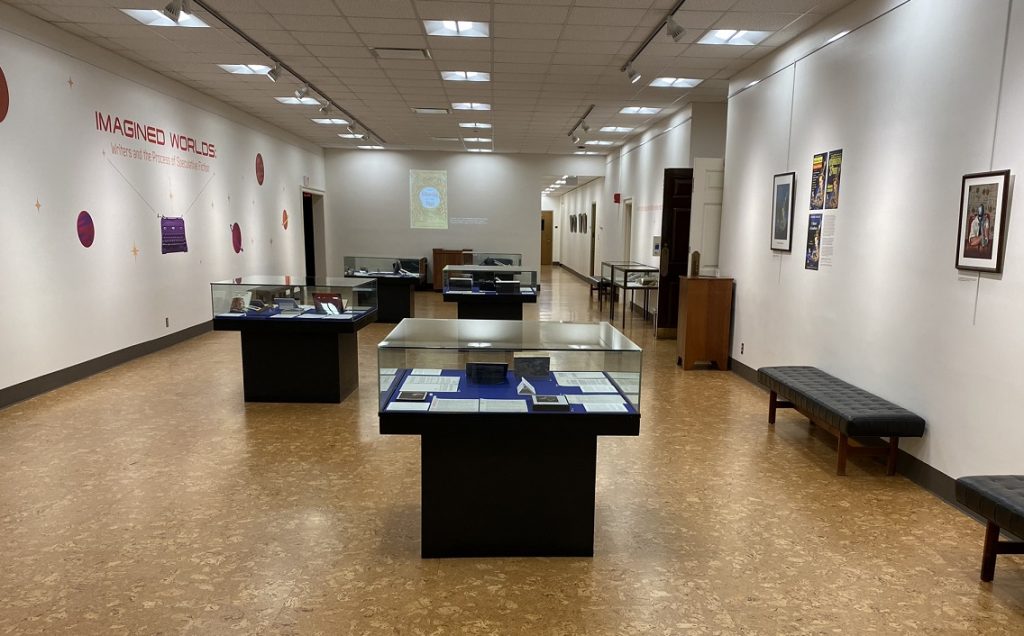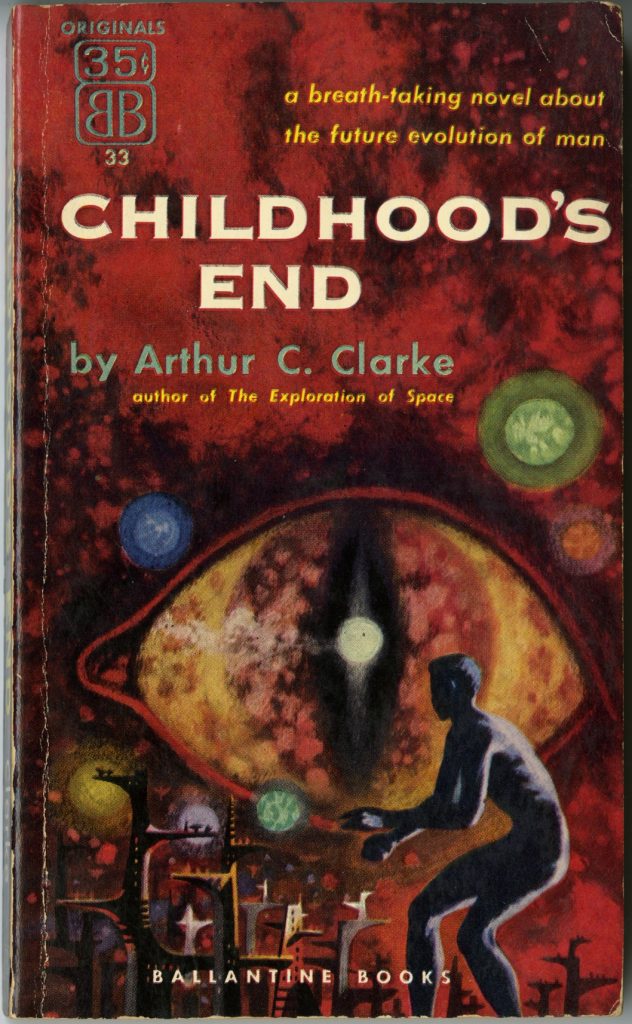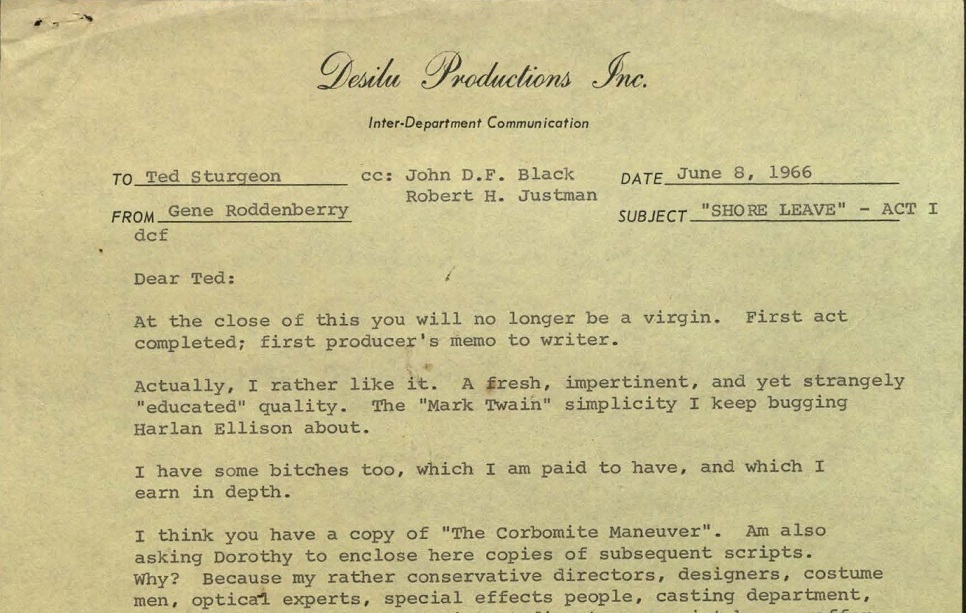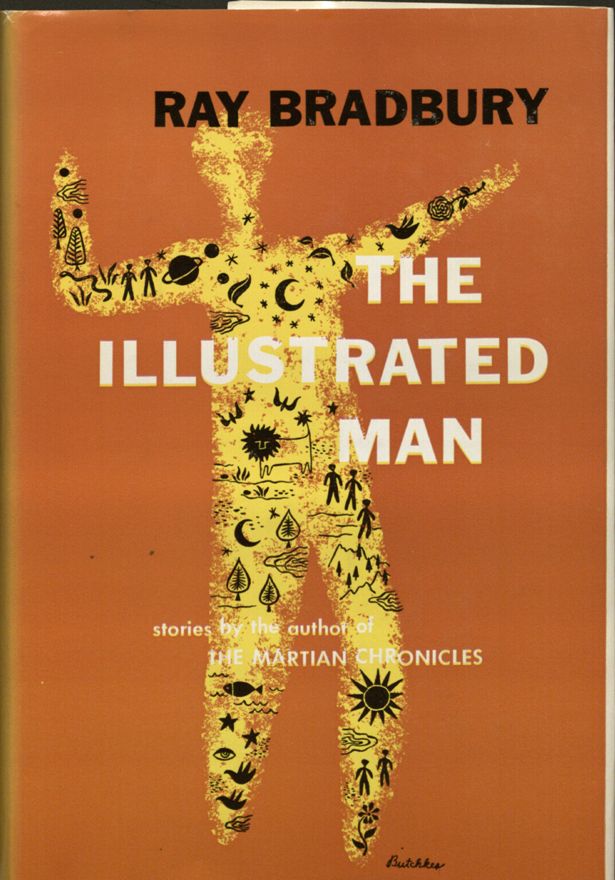Expanding Speculative Horizons: Exploring KSRL’s Speculative Fiction Collections
November 4th, 2025Last month, the J. Wayne and Elsie M. Gunn Center for the Study of Science Fiction hosted the fourth annual Sturgeon Symposium, “Expanding Speculative Horizons,” to showcase contemporary speculative fiction scholarship and writing and to present the Theodore Sturgeon Award. I was able to attend the first day of the Symposium and began thinking about the relationship between the Kenneth Spencer Research Library and the speculative fiction community.
KSRL holds a variety of speculative fiction collections in Special Collections, and my colleagues in the manuscripts processing department have had the joy of working on these collections. I’ve chosen a small slice of this material—four of Spencer’s collections—to spotlight here to the variety that exits in speculative fiction.
Theodore Sturgeon (MS 303, MS 254), the namesake of the Symposium and Award, was a speculative writer who wrote ten novels, including More than Human (1953), but is perhaps best remembered for his many short stories. Sturgeon’s speculative fiction often explored social issues and pushed back on societal norms; his 1953 short story “The World Well Lost” won the Gaylactic Spectrum “Hall of Fame” award in 2000, for example. Sturgeon’s writings covered a variety of genres, and several other speculative fiction creatives can be found in this collection, including Octavia Butler; Ray Bradbury; Judith Merril; Roy Thomas, a Marvel Comics editor and author; and Gene Roddenberry, the creator of Star Trek, to name a few.

Mary Rosenblum (MS 362) was a finalist for the Theodore Sturgeon award in 1998 with “The Good Juror,” a story she co-authored with James Sarafin, and was also a finalist for the Nebula Award in 2008 for her novelette “Night Wind.”[1] But what interested me about the Rosenblum collection was how Rosenblum explored speculative fiction horizons through an environmental lens. In her novel Drylands, Rosenblum wrote about the dangers of climate change and the exploitation of resources in a post-apocalyptic setting. While speculative fiction is no stranger to exploring alternate histories and cautionary futures, Rosenblum’s Drylands was one I had never heard of before. It had been a Locus First Novel Award nominee, and I was pleasantly surprised to find her collection while researching KSRL’s speculative fiction holdings.

Spencer Library doesn’t just have speculative fiction writers; much of Terry Lee’s original speculative fiction artwork can also be found here (MS 391). Lee is a KU graduate and a former font designer for Hallmark. He won a Chesley Award in 1988 for his cover artwork for the January 1987 issue of Amazing Stories.

Magazine. Terry Lee papers. Call #: MS Qa 56, Box 1, Folder 5.
Finally, Spencer holds the papers of William F. Wu (MS 367). Wu is a speculative fiction writer whose works have been published in Amazing Stories, Analog, and Isaac Asimov’s Science Fiction Magazine, amongst others, and has been nominated for the Nebula, World Fantasy, and Hugo awards. Wu’s academic interest in Asian American representation in popular culture led to him writing The Yellow Peril: Chinese Americans in American Fiction, 1850-1940 (1982), which had its origins as his doctoral dissertation. From convention materials to correspondence to comic books, William Wu’s collection provides researchers with a wealth of speculative fiction materials.

Speculative fiction continues to be an ever-evolving field of literature, with new and exciting visions and interpretations of reality arriving each year. I’m already excited for next year’s Sturgeon Symposium and Theodore Sturgeon Award presentation. But in the meantime, there’s still other speculative fiction horizons to explore at Spencer Research Library!
Want to explore further? Check out these other speculative fiction collections:
- Kij Johnson papers, MS 377, Kenneth Spencer Research Library, University of Kansas.
- John Kessel papers, MS 358, Kenneth Spencer Research Library, University of Kansas.
- Round Robin collection, MS P769, Kenneth Spencer Research Library, University of Kansas.
- A. E. van Vogt Collection, MS 322, Kenneth Spencer Research Library, University of Kansas.
Molly Bauer
Manuscripts Processor
[1] The winner of the 2008 Nebula Award in the novelette category was another writer whose papers reside at Spencer Research Library, John Kessel. He won for his novelette “Pride and Prometheus.”










